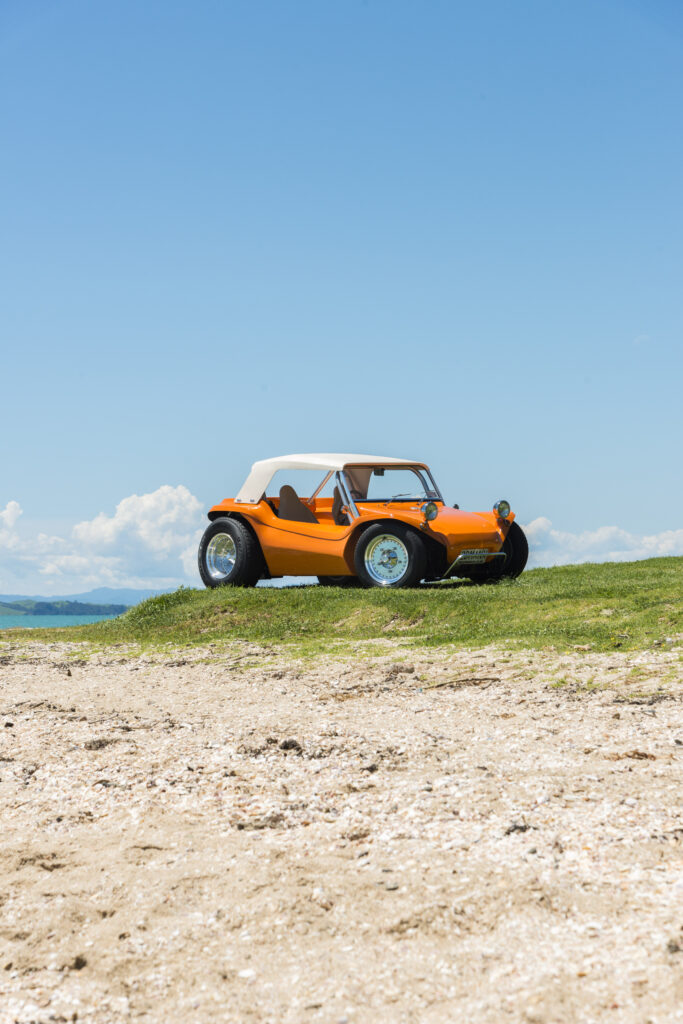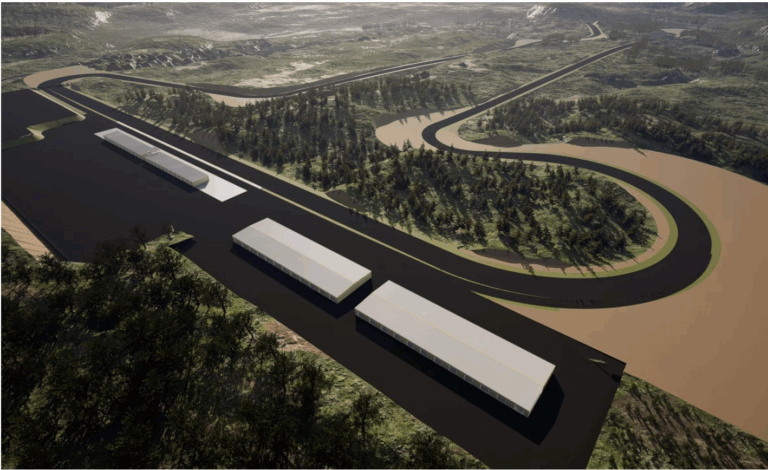Just one look at the cute and cheeky lines puts a smile on your face. The beach buggy is as much pure and simple joy as ice cream on a sunny day
By Ian Parkes
Photography: High Art Photography
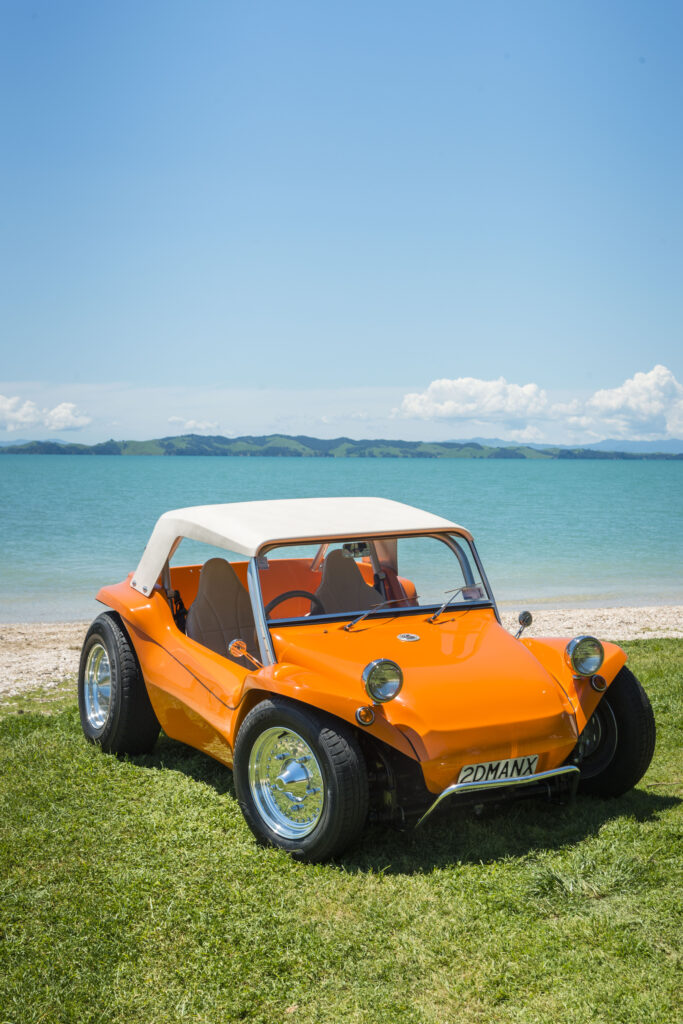
The dak-dak-dak of the beach buggy’s air-cooled engine spreads head-turning smiles wherever it goes. It has a timeless appeal but it also comes laden with more than a hint of nostalgia for the golden summers of youth, before ice creams — and suntans for that matter — became a guilty pleasure.
The boom time for the beach buggy was the 1960s. They were invented then but volume manufacture screeched to a halt in the 1970s. New car legislation in the US outlawed things like open wheels and exposed engines, but the owner of this classic example, Rob Schrickel, says small-scale manufacture has bubbled along happily ever since.
“They never really went away,” he says.
Beach buggies reverted to being homebuilt from kits based on existing vehicle mechanicals. Homebuilds are supported by air-cooled VW specialists and any number of suppliers of the small number of additional parts you need. Windscreens — a rubicon for many kit-car creators — are flat glass, and the surrounds are simple to fabricate. Bruce Meyers, the designer of the classic ‘dune buggy’, as it is called in the US, deliberately kept it simple.

The Manx original
The lines of this buggy are taken directly from Bruce Meyers’ original Manx design. In the late ’60s, a predecessor of Rob’s bought an original body in Australia, shipped it here, and moulds were taken from that. Those are the moulds from which Rob’s buggy came.
It’s part of the lore of beach buggies that, although Bruce Meyers is credited with being the creator of the vehicle, he never really owned it or invented it. In the accompanying article, we cover more of the history, but in short, in the late ’50s, other heavier, modified car chassis were already being thumped around the dunes. They were joined by a few of the much lighter, VW-based sleds, which used the rear engine layout to great effect.
This simple and efficient arrangement appealed to surfboard-maker and boatbuilder Bruce Meyers. He said he didn’t invent the beach buggy — just this style of beach buggy, which transformed bare rail-type rigs into something genuinely desirable for its own sake. He drew the original super-cute Manx body, made it in glass fibre — and ignited a craze. It was a classic example of the marriage of form and function.
Meyers’ company made nearly 6000 kits, then, as he saw copies and variations proliferating everywhere, he tried to copyright the design. Crucially, in a test case, the judge ruled he was too late. The design was in the public domain.
Since the ’70s, beach buggies have predominantly remained where they started: in the homebuilt domain. Rob built his own car, of course, and he is the ideal man to talk to if you want to know about beach buggies. He is the owner of the moulds, and he has made some modifications to make the bodies easier to manufacture, such as making the dashboard and bonnet as one piece.
Rob makes eight or nine body kits a year for a steady stream of builders from his business, Beach Buggies NZ.
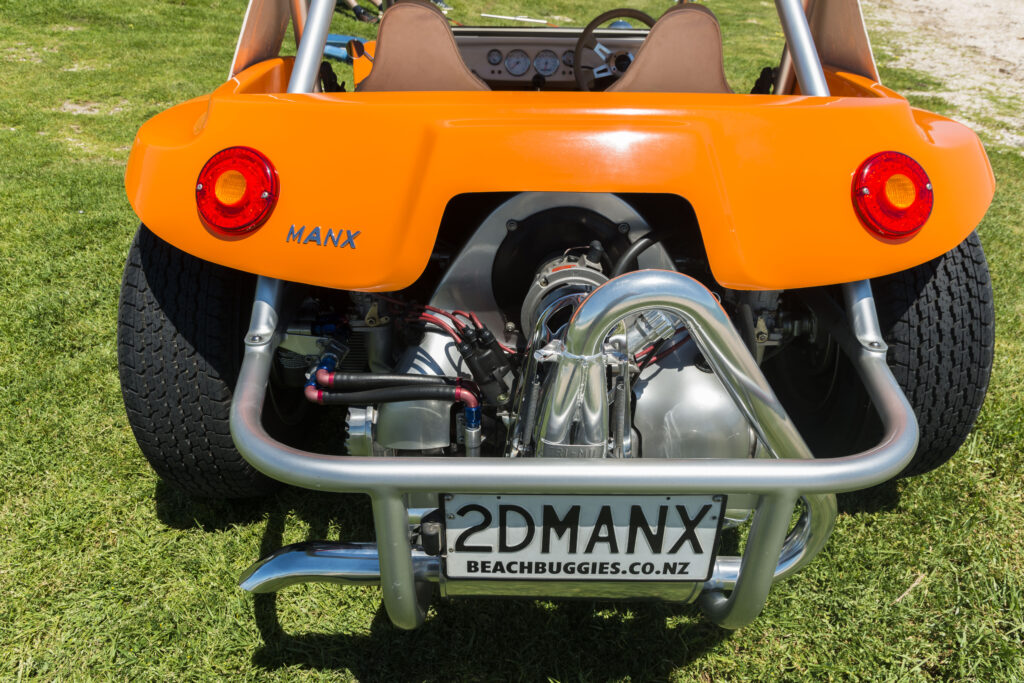
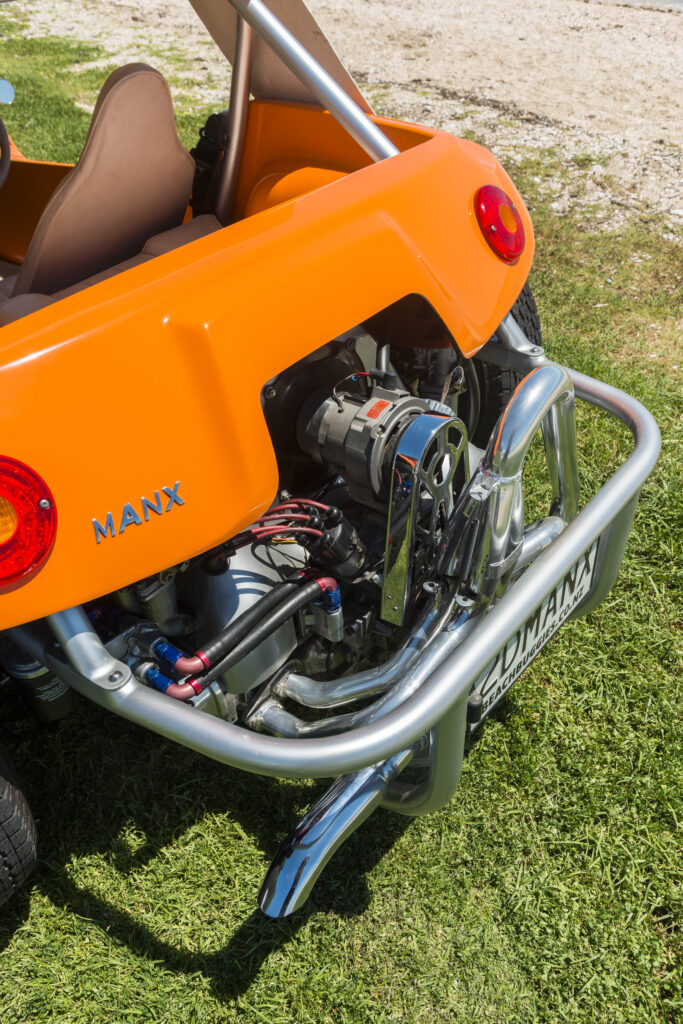
Owner’s choice
Rob says this business is more of a sideline now. He used to make complete cars to order, but now he prefers to leave the heavy engineering to others. He supplies plans for shortening the VW Beetle floorpan for the classic two-seater, but that’s not necessary for the less popular four-seater version. He also supplies many of the bits and bobs needed to kit out a car, as listed earlier, as well as plans for roll cages and engine cages.
He says the gorgeous wheels on his car were unavailable for a while, as are the tail lights, but there’s a host of options from other manufacturers. Besides, most builders prefer to personalise their cars to a greater or lesser extent.
Rob prefers a period look but others have gone for all-modern kit, including Subaru flat-four or Mazda rotary engines, or even Holden V6s. Mounting kits for those engines and transmissions are available.
Rob regularly sees line-ups of buggies at shows, and says no two are ever exactly the same.
The classic formula involves finding a donor VW Beetle — although those have “increased ridiculously” in price. He recommends buying the whole vehicle, as it can supply main parts, engine, gearbox, and, of course suspension, wheels, and brakes. It can also supply the fuel tank, steering column if it is the collapsible version, seat bases, wiring loom with switches if you are not replacing it, speedo and cable if not replacing them, and tail lights if you like them.
“You need the whole rolling chassis,” Rob says.
However, he says not to buy 1302, 1303, 1302S, or 1303S ’Dubs. These have the MacPherson strut front suspension, which cannot be used. Rob says the classic swing axle rear suspension is preferable, as it will not interfere with the battery box on the short-wheelbase version and the chassis is easier to shorten.
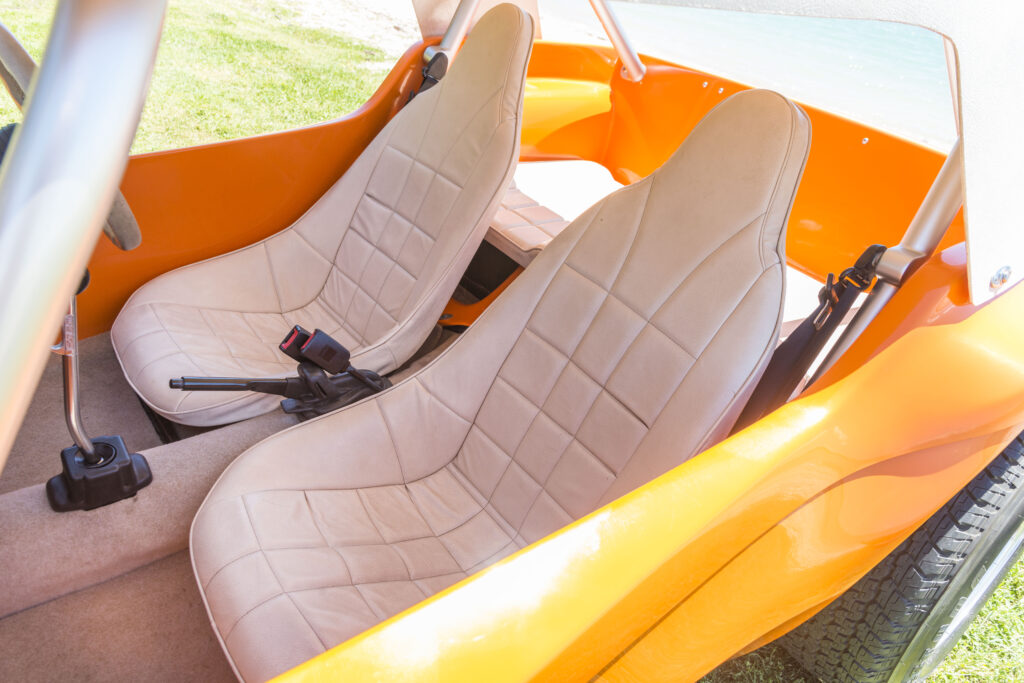
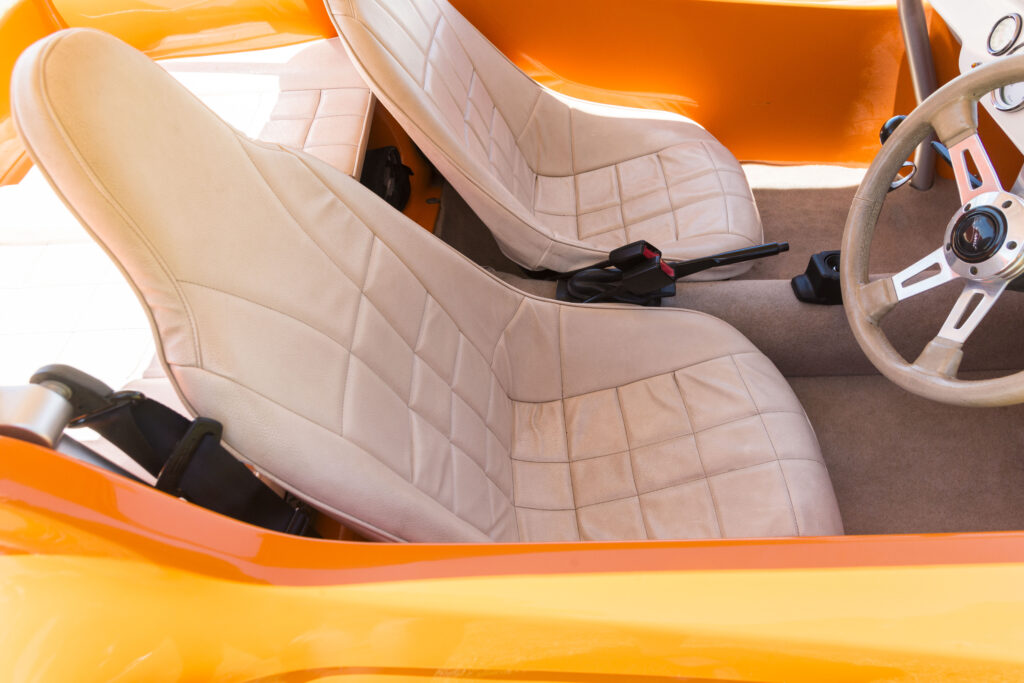
The finishing touch
You can buy the body moulding from Rob — around $3800 for a two-seater or $4200 for a four-seater. He also offers the sidepods, which fill in the blank under the original high-line Manx body. They are priced around $1500 but they are the finishing touch that make the buggy look much more complete and professional. Rob’s company also fabricates the roll bar and seat-belt anchor point.
As many of these vehicles have been made road legal, compliance with low-volume vehicle requirements is now fairly straightforward and well mapped out.
Beetles were made with a range of engines — everything from 1100 to 1600cc as standard. With a lightweight body, they all provide ample power for fun in the sun. Everything up to the 2300cc engine is available through VW air-cooled specialists. They have a world of tuning parts available to rebuild any engine through to blown fire-breathing monster spec, as well as more sophisticated suspension kits and brake kits.
The colour is another endlessly customisable feature. The owner can specify whatever colour they like and it is laid into the mould, under the gelcoat, so the fibreglass is self-coloured and durable.
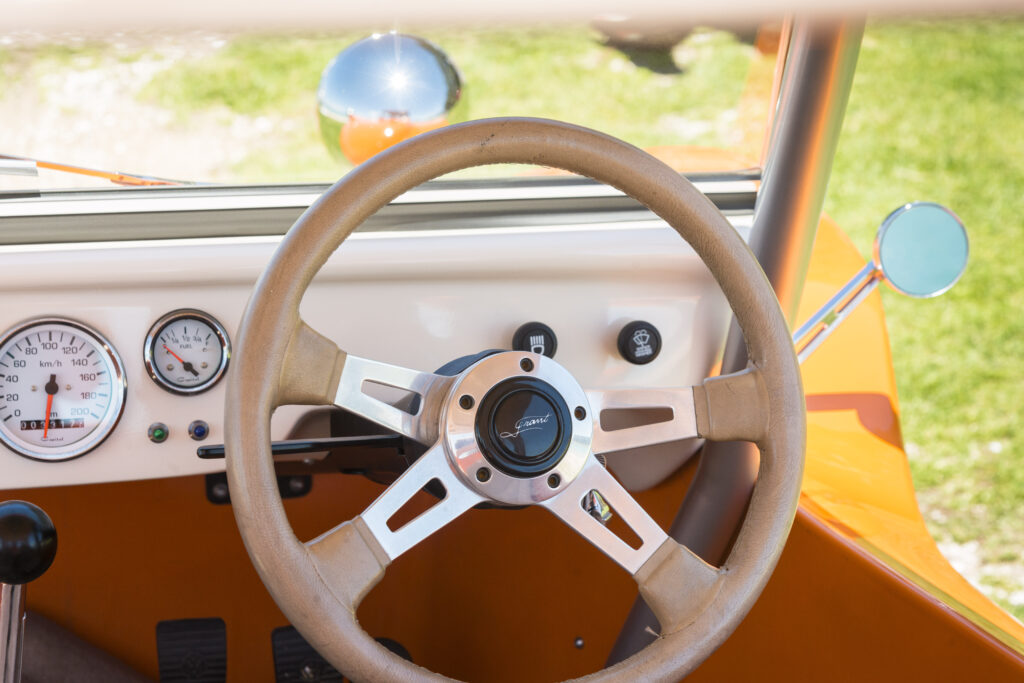
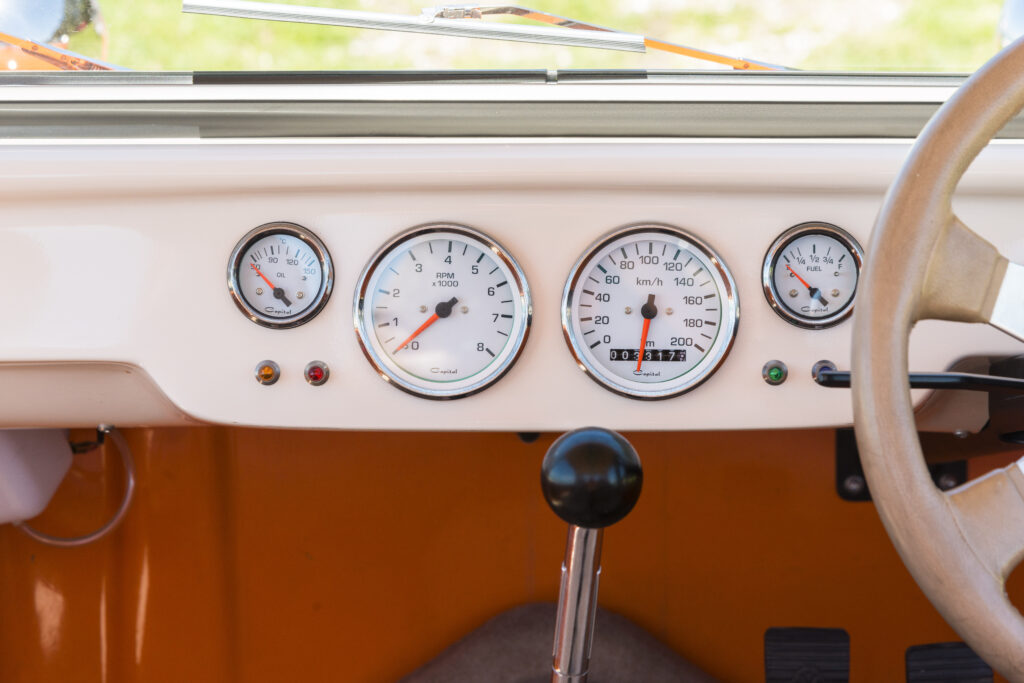
Social scene
Rob’s buggy looks mint, but he built it back in 2004. He has done some tweaks since then, including adjusting the suspension for a lower look. It clearly doesn’t get a hard life, as it has to pull duty as a calling card for his business, doing around 400km a year. However, Rob says it’s nothing compared to the unbelievable standard achieved by some recent builders.
I asked if he gets repeat business, perhaps from people who might have sold their buggy and then decided they still need one. Yes, he does. In fact, he has taken an order for a third one from a customer who is apparently building them for his children.
As Rob says, the beach buggy scene is quietly bubbling along. Owners often meet up at shows, and Rob hosts an informal meet-up at his workshop in Auckland’s Penrose on Saturday mornings. While he doesn’t build for others any more, he’s happy enough to help out if others want to work on their own vehicles — and of course, he has decades of expertise to call on.
After drawing a small crowd wanting pictures with his car while it posed on the beach for our shoot, Rob and I went for a short drive. Although essentially an open car, the tidy detachable roof on this car and the optional roll cage make for a very small access hole. I take two goes.
Rob says he prefers having the roll cage as it gives you something solid — in preference to the relatively fragile windscreen — to hang onto while you fold yourself in.
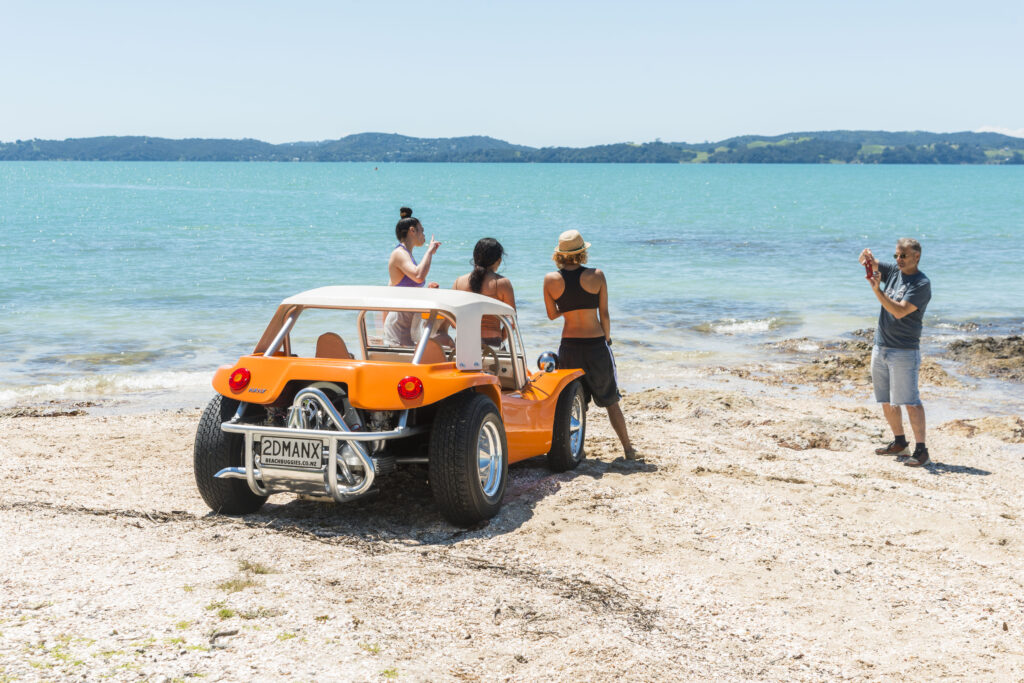
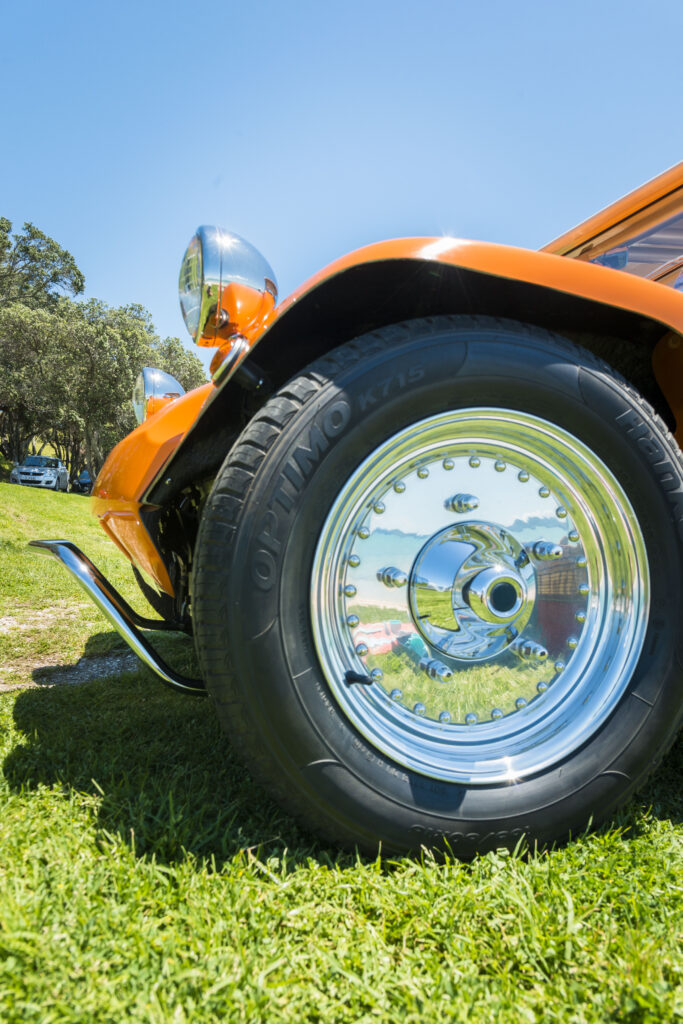
Fun in the sun
This is no mere fashion statement. The engine bursts into life with a friendly roar and a shake, and engaging the gears through the short gear lever obviously makes for a very direct connection to the mechanicals in the transfer box.
We head off down the road, with the engine’s distinctive beat wrapping in through the open sides — it’s an experience that’s so much more visceral than in a standard open-top car. The lowered suspension in this car has made the ride a little stiffer than that of its taller riding brethren. Personally, I’d prefer the original arrangement, but Rob is clearly used to it.
Sitting on the car as much as in it, it’s akin to riding a motorcycle — in some ways it’s even more raw as you don’t have a helmet to block sounds and the breeze.
Sensations crowd in. The smile on your face spreads, then spreads even wider as you see the delighted smiles and not infrequent waves from people in cars driving the other way as they spot the bright orange blob.
“I’ve had a bit to do with hot rods as well,” says Rob. “People come up and talk to you, but way more with the buggy. You never get a negative. They are great little things to have some fun cruising around with.”
It’s brilliant, simple fun. Whether you are just cruising the beachfront boulevard or bashing along the beach, there’s nothing quite like it. The beach buggy, now 60 years old, is a true timeless original.

